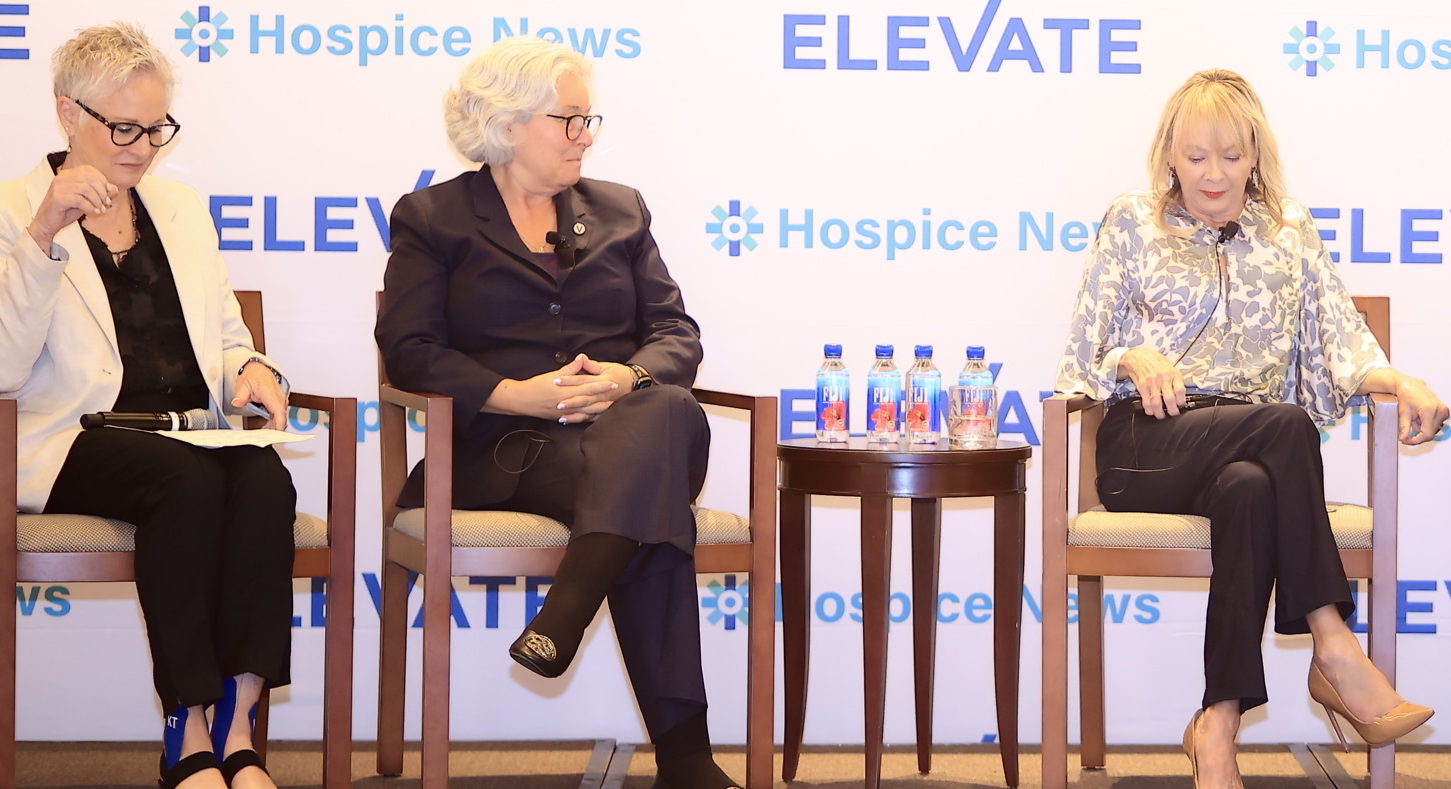Technology and service diversification are two levers driving innovation in an evolving hospice landscape.
Virtual care delivery processes are playing a key role in hospices’ ability to support both patients and staff as end-of-life care expands further upstream.
The aging population has a variety of unmet medical and nonmedical needs in which hospices are well-suited to help address through innovation and process improvement, according to Cheryl Hamilton Fried, CEO of Virginia-based Blue Ridge Hospice.
But to move the needle forward on improving access, utilization and quality of hospice, leaders will need to start seeing the space through a “different lens,” she said.
“End-of-life care truly needs to be reimagined,” Hamilton Fried told Hospice News at the ELEVATE conference in Chicago. “We do need process improvements [to] do all the things to make the visit and experience the best we can make it. I think to be conveners with other providers, to be collaborative, [this] provides disruption and innovation.”
Hospice providers less siloed in the care continuum
Many in the hospice industry see service diversification as a business imperative to ensure access and awareness among patients, families and referring sources across their service communities.
Hospices have increasingly launched palliative care services, private duty personal care programs, and services that address social determinants of health such as transportation and meal assistance. Others have delved deeper into Programs for All-Inclusive Care of the Elderly (PACE) programs, telehealth services, durable medical equipment and medication management, among other areas.
However, these are just the tip of the iceberg of what is needed for hospices to stretch further out across the continuum and better meet the needs of serious and terminally ill patients and families, Hamilton Fried stated.
“We have to fill the gaps in ‘very end-of-life care’ and acute episodic care. We have to service the individuals in between,” Hamilton Fried said. “We have to be responsible for what it is that we do as hospice providers to care for that gap so that we can redefine end-of-life care to not two weeks, but to two or three years. The solution is to redefine it. If you don’t own the continuum of that seriously ill and frail population, we will never be able to provide them with a quality experience.”
End-of-life care truly needs to be reimagined … The solution is to redefine it. If you don’t own the continuum of that seriously ill and frail population, we will never be able to provide them with a quality experience.
— Cheryl Hamilton Fried, CEO, Blue Ridge Hospice
Technology’s growing impact on end-of-life care
Moving out of the “hospice silo” in the health care continuum will take creative changes around the use of technology at operational and clinical levels, according to Raianne Melton, senior clinical manager of professional service at Axxess. Melton is also a registered nurse.
Technology is playing a larger role in hospices’ ability to address clinical capacity strains amid evolving patient needs, she said. Honing attention on how hospices can integrate technology to better support clinical documentation and patient admission processes may be a key to thriving, Melton indicated.
“We have staffing issues that are driving innovation,” Melton told Hospice News. “Focusing on staffing and anything that we can do to streamline their processes and provide a work-life balance, [that] is going to be the most important thing to be faced in the future. What I’m hoping as we move into the future is that we really move out of our hospice silo [and] be very innovative in the way we communicate with all the other entities that are involved with the patient.”
What I’m hoping as we move into the future is that we really move out of our hospice silo [and] be very innovative in the way we communicate with all the other entities that are involved with the patient.
— Raianne Melton, senior clinical manager professional service, Axxess
In some ways the pandemic has been a propellant for clinical innovation in the hospice space, according to Dr. Faith Protsman, regional medical director of California at VITAS Healthcare, subsidiary of Chemed Corp. (NYSE: CHE).
The pandemic demonstrated “gaps and deficiencies in health care, particularly around access to care and barriers to care,” while also illuminating ways to innovate, she stated at the ELEVATE conference.
Having “tangible tools” that improve day-to-day workflows is a large part of what’s shaping the hospice care delivery equation, Prostman indicated. More efficient tools can reduce the amount of time spent on administrative tasks and clinical documentation “down to minutes, rather than hours,” she said.
“[COVID] helped us with innovation,” Protsman said. “We actually encourage our employees to identify areas of their workforce processes that can be improved. We use low-code technologies on forms to create applications that can be used in the day-to-day work that our care team members do. What is incredible is that it takes these thoughts and ideas and it enables our team members to create tangible tools that can actually make their lives easier and help us provide better care.”



